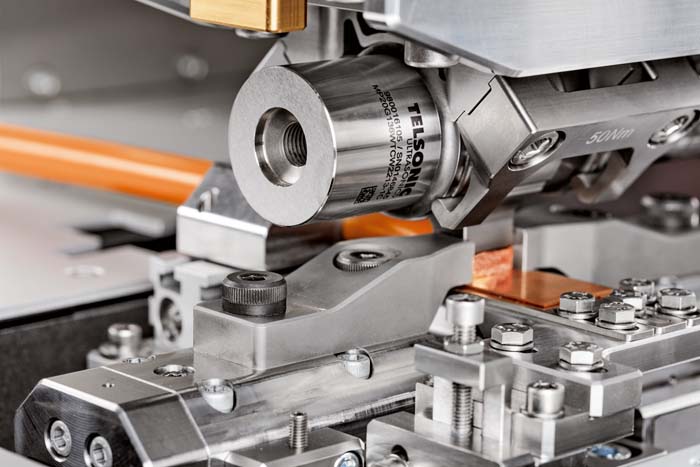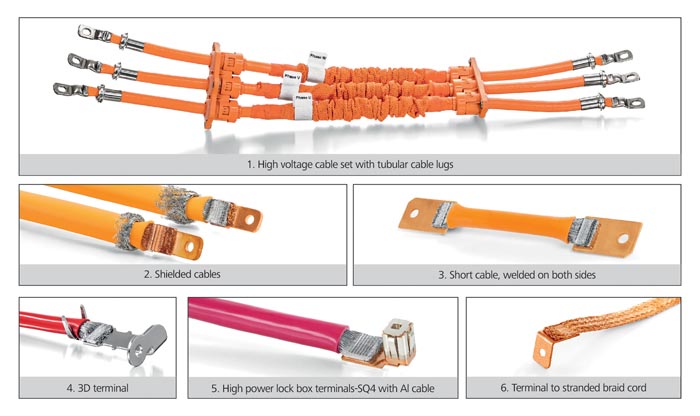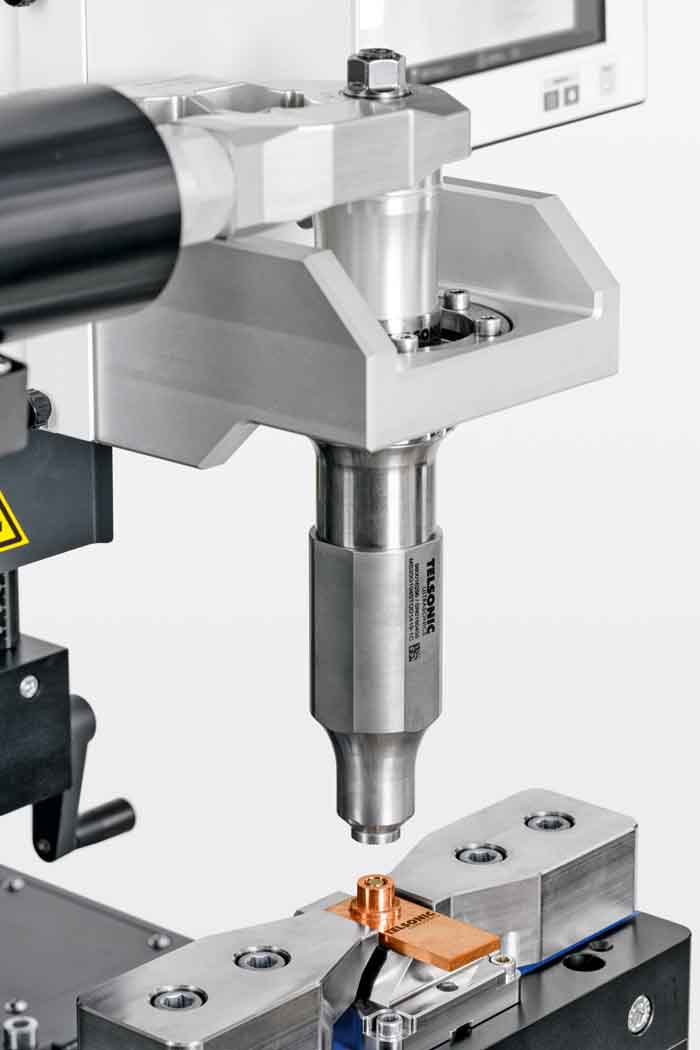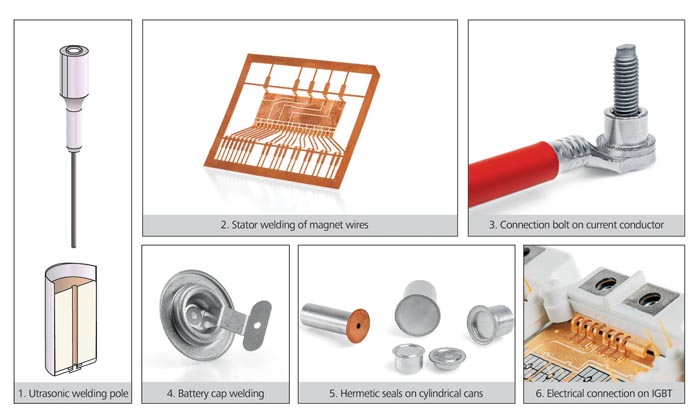Expanding Ultrasonic Applications in EV’s
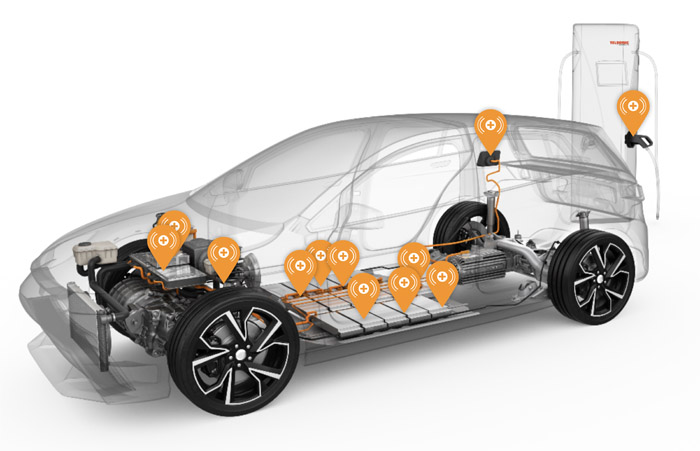
Electromobility is now regarded as the key to climate-friendly driving practices because electric vehicles generate significantly less carbon dioxide per kilometer than vehicles with conventional combustion engines – especially in combination with electricity generated from renewable sources. At the same time, the energy storage systems used by electric vehicles can compensate for fluctuations in the electricity grid by means of wind and solar power, thereby supporting the expansion and market integration of these energy sources.
This presents new challenges for the automotive industry. These new challenges need to be addressed in an innovative manner. This also applies to the manufacturing technologies that are required for all aspects of electromobility, from lightweight body construction to the electrical and electronic components and battery production. Processes that use ultrasonics open interesting possibilities about quality and from an economic and ecological point of view. Ultrasonic-based processes and electric vehicles have much in common: Efficiency, performance capability, reliability, connectivity, and eco-friendliness are among the essential characteristics that they both possess.
The objective of this article is to introduce some of the breakthroughs in the automotive wire harness and battery manufacturing for both internal combustion engine vehicles and EV. Through this symbol, we define challenging applications with solutions that have now been implemented in manufacturing of high voltage terminations and batteries. We highlight metal welding applications of Telsonic’s PowerWheel® and SONIQTWIST® technology in this edition as a general introduction with more joining applications to be introduced later in future articles.
Ultrasonic welding technology is a proven joining process that is increasingly specified by carmakers for use in EV for cable to terminal connections, bus bars, battery manufacturing and power electronics. The automotive wire harness manufacturing industry has traditionally been the single largest user of ultrasonic welding, mostly splicing of wires, since the late 1980’s. Linear welding is the more common technique known and used by all equipment manufacturers and a standard process for the splicing of the wires. However, like many other joining processes, there are limitations in size, welding in smaller area, geometrical shapes, orientation of welding, and vibration effects on peripheral components.
Torsional Metal Welding Technologies
Telsonic Torsional PowerWheel and SONIQTWIST technology have made innovative solutions for EV joining applications that were impossible otherwise. The Torsional technology allows welding of larger size welds, gentle vibration and out of reach joining areas. This has expanded the ultrasonic application spectrum significantly. These innovative techniques allowed many joining applications that were impossible by Linear welding as we know it. These torsional technologies opened the door to new design of components as well as new manufacturing methods never possible in the past. In fact, this technology is sometimes found to be the only solution for electric car battery manufacturers and in the termination of high-voltage cables. Other examples where torsional ultrasonic welding proves to be the superior method are bus bars, 3D terminals and integrated gate bipolar transistors (IGBT).
PowerWheel welding technology application overview for stranded wire on terminals
Following are some specific applications and challenges for ultrasonic welding of stranded wire on terminals:
- High voltage cable set with tubular cable lugs – Welding is proven to work with PowerWheel.
- Shielded cables – Larger cables up to 200 mm² in a smaller weld area is possible when there are restrictions on surface area of the connector.
- Short cables welded on both sides – Welding both ends of a short cable by Linear welding could allow the vibration for the second weld breaks the first weld. Torsional welding has much less vibration affect and therefore, it makes welding of cables as short as 4 Inch possible.
- 3D terminal – in this situation, PowerWheel offers the advantage of more access to the weld area.
- High power lock box terminals ask you for with Al cable – The Royal Power Solutions terminal, SQ4, in this case is about 17 mm high. PowerWheel® is the method to access the weld area.
- Terminal two stranded braided cord – Braided wires have very fine strands which can be damaged if it was not for the gentle Torsional vibration.
SONIQTWIST welding technology application overview for metal components
Following are some specific applications and challenges for ultrasonic welding of electrical components:
- Ultrasonic welding pole – The application requires the welding to take place at the bottom of the cylindrical cell through the jelly roll, so the ultrasonic welding tool has to have a long reach.
- Stator welding of magnet wires – Reaching inside this IGBT* is much easier with TSP equipment. The gentle vibration allows more consistent welds without damaging the ceramics.
- Connection bolt on current conductor – This is a 360°weld around the bolt that requires a recess on the ultrasonic tool. Connecting the bolt on the connector conductor allowed significant manufacturing cost reduction.
- Battery cap welding – The space is limited as the film-style electrical conductor must be welded into an embossed channel in the battery cap.
- Hermetic seals on cylindrical cans – Hermetic seal in the circular shape for applications like airbag sensor
- Electrical connection on IGBT – The Cu-plated ceramic printed assembly board in IGBT modules for welding the conductor. The gentle vibration allows more consistent welds without damaging the ceramics. The process is also very forgiving on the fine wire bonds on the DBC.
About Telsonic:
The Swiss Telsonic Group has been offering its industrial ultrasonic solutions through representation in Europe, America and Asia since 1966. Constant innovations help to ensure that, in many applications, Telsonic has established a lead over competitors that offers added value to customers. With over 250 highly qualified staff, the owner-managed company specializes in plastic and metal welding as well as ultrasonic cleaning and sieving. All over the world, customers in fields such as automotive, packaging, and medical technology value the company’s comprehensive services and broad range of ultrasonic components for system construction as well as its complete welding systems.
- IGBTs (insulated gate bipolar transistors) are designed for high voltage switching applications. Due to their high efficiency and reliability, they are the perfect match for (plug-in) hybrid vehicles and electric cars.




















































